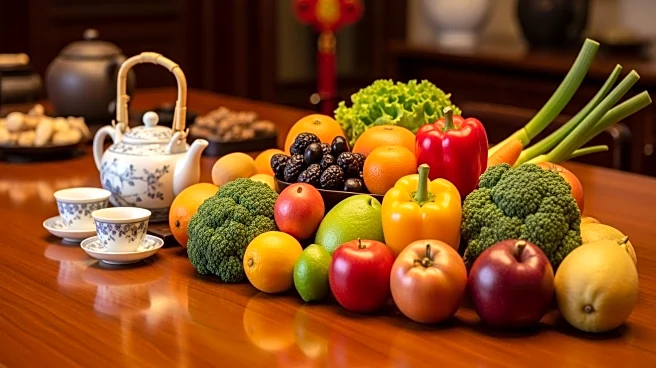What's Happening?
China has announced its fertiliser import tariff quotas for the year 2026, setting the limit at 13.65 million metric tons. This decision was communicated by the Chinese commerce ministry through a notice
released on Tuesday. The establishment of these quotas is a significant move as it dictates the volume of fertiliser that can be imported into China under specific tariff conditions. Fertiliser is a critical component in agriculture, and China's import policies can influence global supply and demand dynamics. The quotas are part of China's broader strategy to manage its agricultural inputs and ensure food security, while also balancing domestic production with international trade.
Why It's Important?
The setting of fertiliser import quotas by China is crucial for global agricultural markets. As one of the largest consumers of fertiliser, China's import policies can significantly affect global prices and availability. For U.S. fertiliser producers and exporters, these quotas could impact their market strategies and sales forecasts. A higher quota might mean increased opportunities for exports to China, while a lower quota could limit market access. Additionally, this move could influence global fertiliser prices, affecting U.S. farmers who rely on these inputs for crop production. The decision underscores the interconnectedness of global agricultural supply chains and the importance of international trade policies.
What's Next?
Stakeholders in the fertiliser industry, including producers, exporters, and agricultural businesses, will likely monitor China's future announcements and trade policies closely. Adjustments to these quotas or changes in China's domestic production could lead to shifts in global trade patterns. U.S. companies may need to adapt their strategies to align with China's import policies, potentially seeking alternative markets or adjusting production levels. Additionally, diplomatic and trade negotiations between the U.S. and China could influence future quota settings and trade relations.












